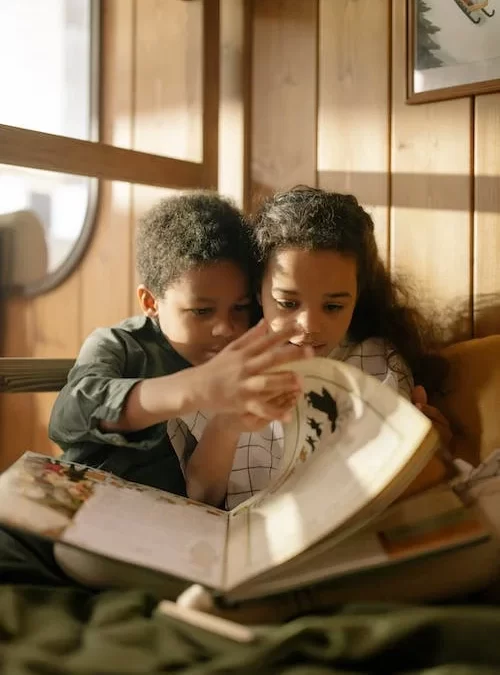Photo by cottonbro
The act of entertaining children with stories is traced back to the early years. They elaborately told these stories to amuse, give a little scare, or teach children a valuable lesson. Either way, you will learn about how children’s stories first started.
It’s safe to say that children’s literature began as original tales passed down from one generation to another. As each version grew, so did they shape the young minds of that period until it became a cultural phenomenon that also shaped the subsequent social norms. Whether true or not, these folktales have varying degrees of influence and speak volumes of their capacity to enrich a child’s mind until they grow older.
Children’s literature has an extensive scope which covers fairy tales, fables, folk songs, lullabies, and oral stories. They created these categories in an easy-to-understand manner until a range of beloved classics and picture books became a recurring work that’s been read by children and adults.
An Orally Passed Tradition
Irish folklore is a concrete example of tales retold from the beginning, all the way back to 400 BCE. You might know Aesop’s Fables which have been around since 400 AD and recorded on papyrus scrolls. Even in Imperial China during the Song Dynasty, storytelling has been a social activity. Those tales are heavily used until now as they are used for educating students in modern-day China. However, Greek and Roman folktales seem to be nonexistent at the time.
Origins Of Picture Books
The first few versions of illustrated children’s literature were pocket-sized chapbooks folded together instead of getting stitched. They often contain pictures cut out from wood that are paired with specific sections. Even so, it didn’t appeal much to children during the early centuries.
It was until later in the 1600s that people’s perception of childhood started changing. Children are now seen as separate individuals with different needs and capacities. Due to that mindset, European publishers published works catered explicitly to children. The texts became didactic, although there are literary pieces written in other types of successions.
The growing popularity of illustrated children’s books became a precedent throughout the eighteenth and nineteenth centuries. The first book mainly intended for children’s reading pleasure was “A Little Pretty Pocket-Book” by John Newbery. The 1800s became an economically booming era for paper and printing.
The Evolution Of Modern Children’s Literature
Literacy among children became widespread during the 1920s, along with books that were mass-produced in color pages. This period became an industrial evolution for children’s books as well. An example would be the “Millions of Cats,” published in 1928 and written by Wanda Gag. Her work became a hit, selling over a million copies. Some literary classics eventually became valued items for book collectors.
There are millions of novels available for children to read, and there’s an ever-increasing number of picture books too. There’s also a significant shift for all authors to be more socially conscious, taking representation in literature so that children from all races, genders, physiques, and capabilities feel seen in those pages. Most classics and modern children’s literature still lack representation, and the publishing industry needs to address this situation.
An example of literature like Little Peggy Lou’s stories for children by Ruthanne Nopson set a pattern of teaching children a wide range of moral lessons. Exposing today’s children to paperback stories, even with the existence of phones and tablets, helps them keep in touch with the magical aspect of diving into another world. At the same time, they can pick up on any valuable lessons they will bring with them as they grow older.
Transitioning From Fantasy To Reality
The social revolution during the 1960s and 1970s drove many authors to teach children about the harsh realities of society. Although that shift slowly brewed during the 1930s until the 1950s, when writers willingly addressed serious topics in children’s stories. Because people saw a need for children to be aware, realism has been steadily included in literature catered to them.


Recent Comments